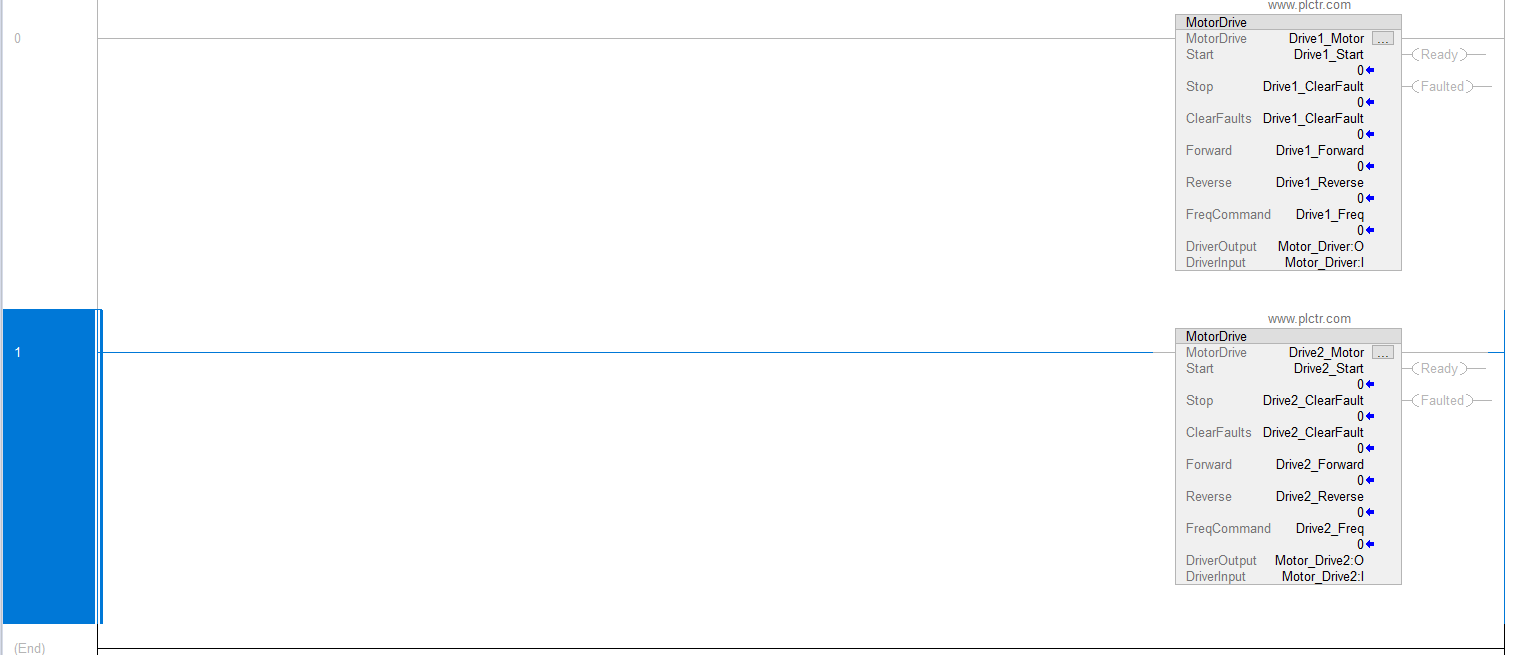Studio 5000 Logix Designer Add-On Instructions Create
How to Create Add-On Instructions in Logix Designer
One of the most powerful newer features of the RSLogix 5000 program is the ability to create Add-On Instructions, It is one of the features that makes the algorithm easy and enjoyable for plc programmers.
How to create and use the Add-On instruction Now we will go through an example together.
Let’s say we control the AC drive with PLC, which we use common,
To control the AC drive with PLC;
If you do not know how to add modules to the PLC after reading our module addition letter from the link below.
https://plctr.com/add-new-module-to-plc-with-logix-designer/
I recommend to read How to Add PowerFlex Driver to PLC chassis in Logix Designer.
Add-On Instruction Motor Control Example
We will use bellow tags in PLC program.
Start: Command required to start the drive
Stop: Command required to stop the drive
Reference: Speed command we will send to the driver
Speed: Speed information we will read from the driver
Alarm: Alarm information from the driver
Forward: The driver’s decision-making input forward
Reverse: Input required for the drive to reverse
As you can see, the New Add-On Instruction button is gray because I am online to PLC. This means that you can’t create an Add-On instruction when you are online with PLC.
Building an Add-On Instruction in RSLogix / Studio 5000
This is one of the major drawbacks of AOIs. However, if planned accordingly, this isn’t a problem, but rather a deterrent for anyone to modify your code on a live PLC.
To create a New AOI, right-click on the “Add-On Instructions” Folder in the Controller Organizer and select “New Add-On Instruction”. If this option isn’t available, make sure that you are offline; as mentioned above, you won’t be able to perform this action online.
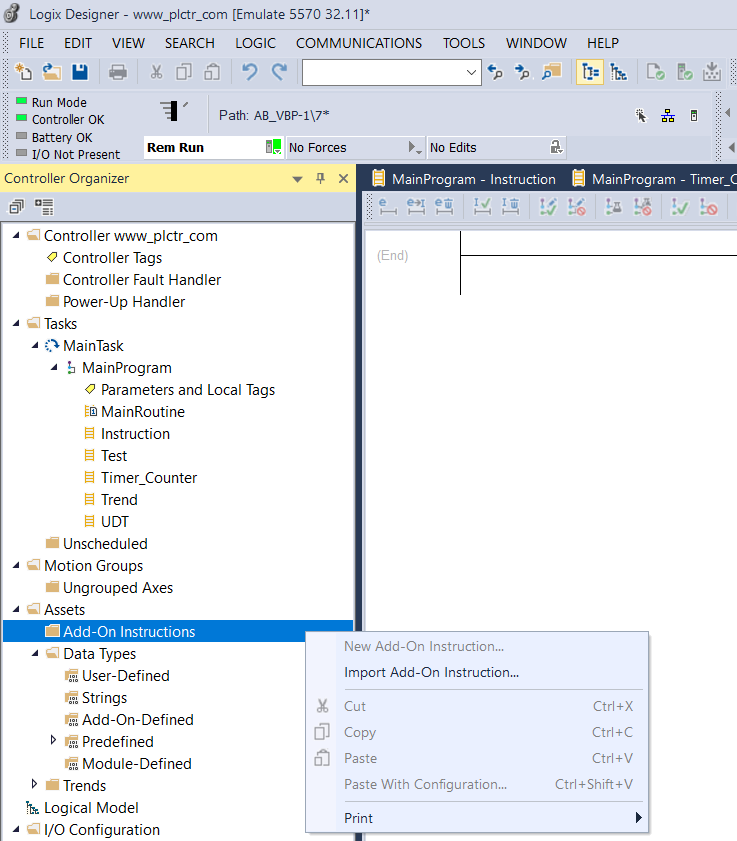
In the new Add On Instruction menu, a window like the one below will appear. In this window, the most important field of AOI such as Name, Description, Revision is the Name field. You cannot change the Name field you have created online later. Since the Name part is usually Add On Instruction, the AOI tag comes before the Name tag. After filling these fields, we create AOI by pressing the OK button.
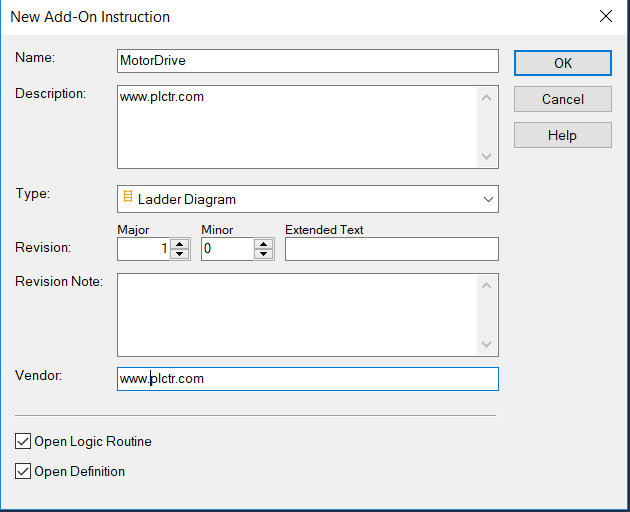
How do I open the Add-On Instruction Definition Editor dialog box – Parameters tab?
- In the Controller Organizer, expand the Assets folder.
- Right-click Add-On Instructions and choose New Add-On Instruction.
- Fill in the required settings and click OK. The Add-On Instruction Definition dialog box opens.
- Click the Parameters tab.
Use the Parameters tab on the Add-on Instruction Editor dialog box to define and configure the parameters of an Add-On Instruction. Add-On Instructions are instructions that you define and add to your project. Once defined in a project, they behave similarly to the controller’s built-in instructions.
Add-On Instruction Definition Editor dialog box – Parameters tab settings
The following table describes the settings on the Add-On Instruction Definition Editor dialog box – Parameters tab. Use these settings to define parameters in the Add-On Instruction.
We create the tags we have mentioned above by switching to the Parameters tab in the Add On Instruction we have created. The important thing here is that the Usage field is correct and that the data can be set or read from outside in the Visible column.
If you make it Visible, this tag value will appear in the AOI block you use in the PLC program.
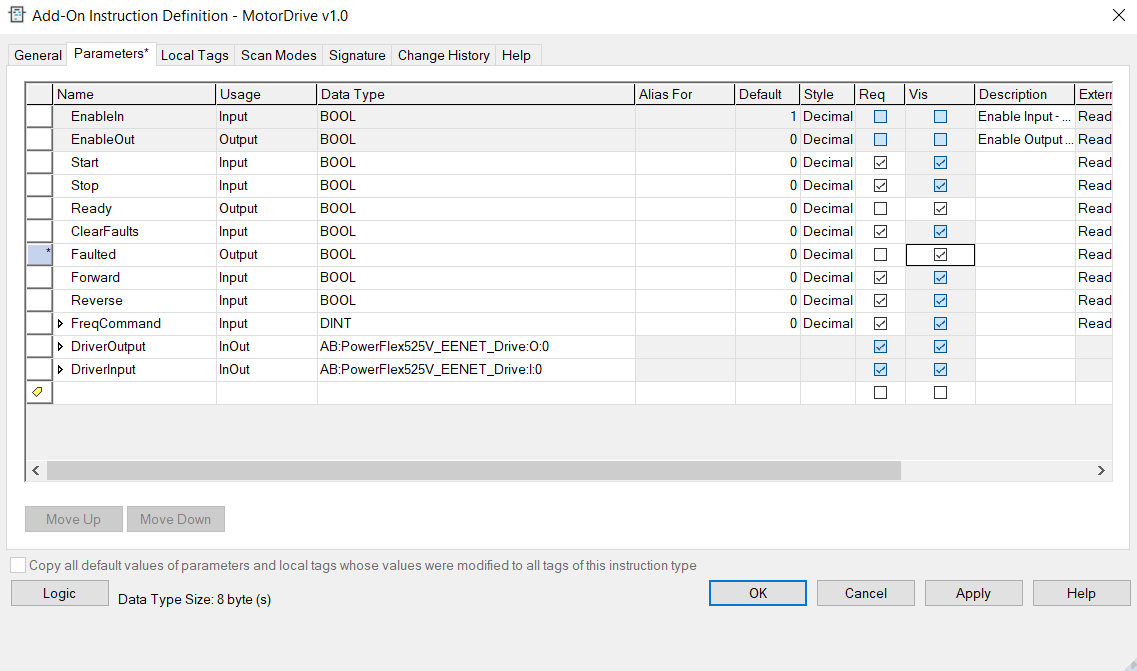
About external access to public and private data
The External Access property setting allows you to specify the level of access (Read Only, Read/Write, or None) external applications and devices have to tags. These external applications and devices include:
- RSLinx® Classic and FactoryTalk® Linx™
- Other Logix controllers
- PanelView
- PLC/SLC controllers
- FactoryTalk Historian
- 3rd party software
The following table describes External Access settings:
External Access setting | Description |
| Read/Write | External applications and devices have full access to the tag and can therefore read and change the tag’s value. |
| Read Only | External applications can read, but cannot change, the tag’s value. |
| None | External applications cannot read or change the tag’s value. |
Important: | The Logix Designer application has full access to all tags, regardless of their External Access setting. |
External access is configured when you create a new tag or data type. After you create a tag, you can modify the tag’s External Access setting like you would any other tag attribute.
To write the AOI logic program, right click on AOI and enter the Open Definetion tab.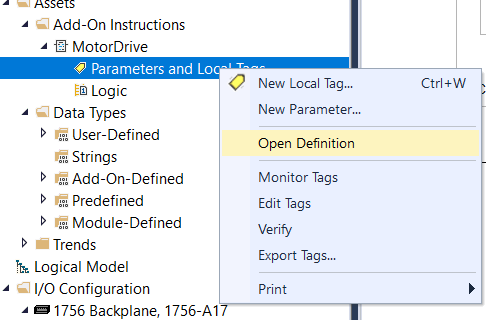
On the logic page, we can write the logic section for engine start by using the tags we have previously created on the parameters page.
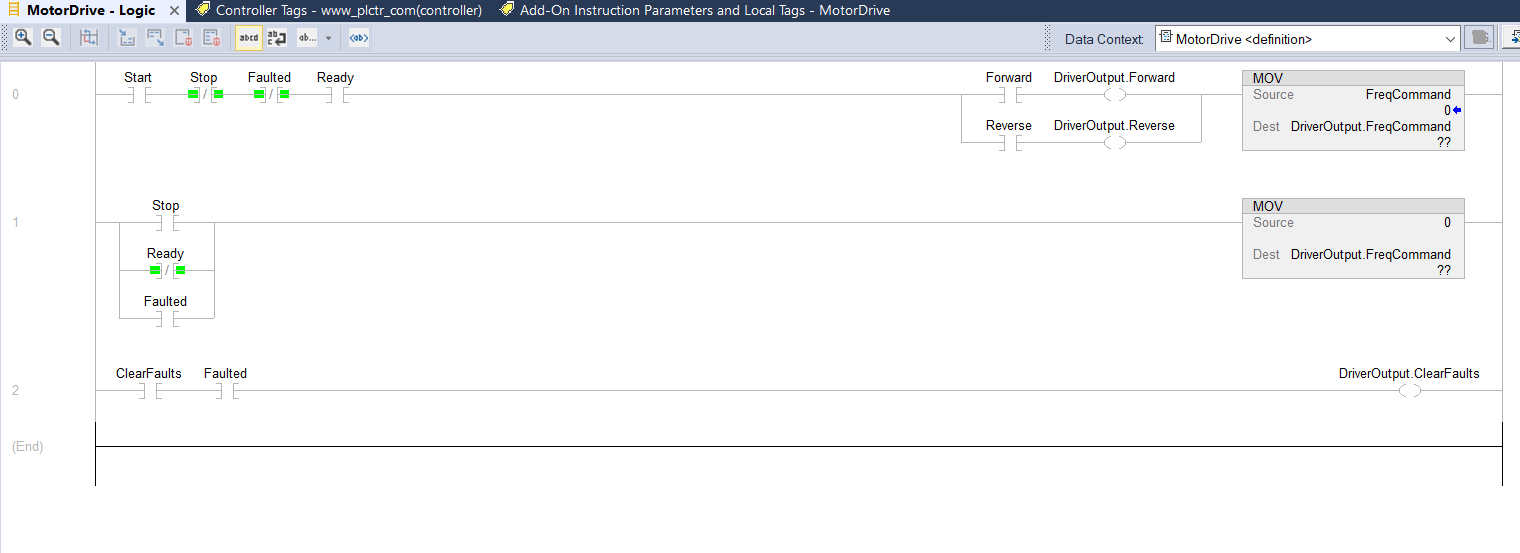
Logic programımızı tamamladıktan sonra PLC programımızda ladder instruction sembollerinin olduğu kısımda oluşturduğumuz AOI görebiliriz.
Oluşturduğunuz Add On Instruction ‘ı diğer instruction’lar gibi kullabilirsiniz.

Gördüğünüz üzere visible olan tagler AOI bloğunda görünebilmektedir.AIO ladder ‘a ekledikten sonra tag’leri oluşturup. Kullanabiliriz.
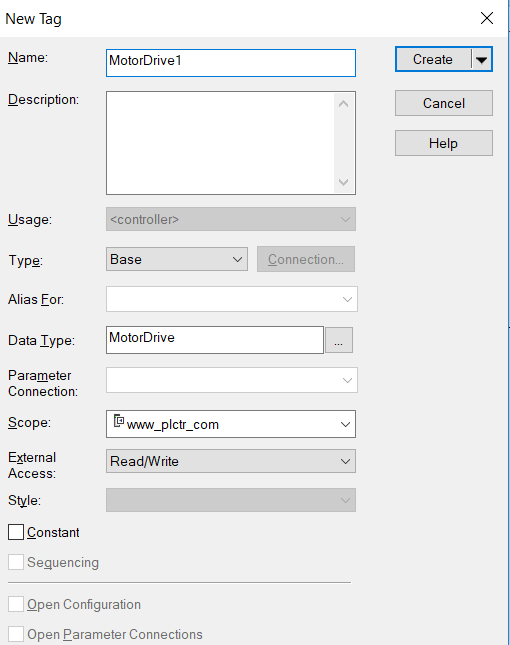
The Add On Instruction blocks will appear on your PLC Ladder page as below.
